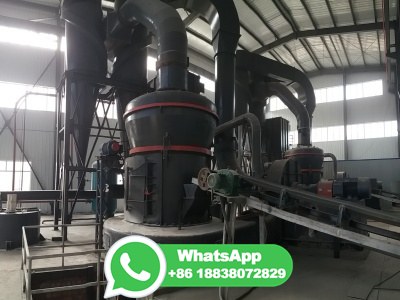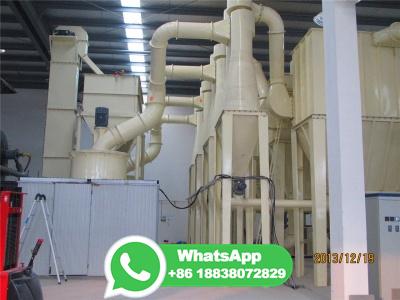
illustrates a progressive view of the water system. Two holding reservoirs supply water to a treatment plant that processes the water to remove impurities and adds chemicals to bring the water into compliance with the Environmental Protection Agency (EPA) regulations on clean water for drinking and commercial cooking.


Water Chemistry Guidelines Volume 1, Revision 6 Final Report, December 2007 NONPROPRIETARY ... Institute of Nuclear Power Operations representatives, ... a plantspecific water chemistry program. vii. EPRI FOREWORD Chemistry optimization of pressurized water reactor ...


Laboratory Manual Chemistry: Matter and Change vii How to Use This Laboratory Manual Chemistry is the science of matter, its properties, and changes. In your classroom work in chemistry, you will learn a great deal of the information that has been gathered by scientists about matter. But, chemistry is .


TEACHER GUIDE CHEMISTRY'S RAINBOW: THE POWER OF pH Figure 1 LAB BACKGROUND INFORMATION: NOTE: This is background information for the teacher to assist in facilitating learning and will be explained to the students after the Explore section. In chemistry, pH is a measure of the acidity or basicity of an aqueous solution.


Practical Guide OCR This guide includes details about the PAGs for Alevel chemistry. It also contains information about other experiments that often occur in Alevel examinations. You may be asked to describe these experiments in details or be asked about reasons for doing individual steps.


Principles of Water Treatment DOEHDBK1015/293 WATER TREATMENT PROCESSES Rev. 0 Page 3 CH04 WATER TREATMENT PROCESSES One of the more common water treatment methods is the use of demineralizers and ion exchange. This method will be discussed in this chapter. EO DEFINE the following terms: a. Ion exchange e. Polymer b. Demineralize f.


Velocity of the water is lowered below the suspension velocity. The suspended particles settle out of the water due to gravity. Removal of TSS (Total suspended solids) from waste water. Destabilisation of colloids by addition of chemicals that neutralise the negative charges. Additions of .


EPA Guidelines: Water and wastewater sampling 1 1 INTRODUCTION Purpose The purpose of this guideline is to set minimum standards and to provide practical guidance on water and wastewater sampling for regulatory purposes in South Australia. Scope This guideline applies to the sampling of waters and wastewaters including:


Do not place heavy materials, liquid chemicals, and large containers on high shelves. Do not store chemicals on tops of cabinets. Do not store chemicals on the floor, even temporarily. Do not store items on bench tops and in laboratory chemical hoods, except when in use. Do not store chemicals on shelves above eye level.


chemicals used to manage the quality of water in cooling systems. Oncethrough cooling systems increase the temperature of the receiving water. Policy Framework The development of a set of environmental requirements for a new thermal power plant involves decisions of two distinct kinds. First, there are the specific requirements of the power ...


The COOL Water Purifiion Project uses two sources of energy to create potable water. For normal uses, wind will be used as a renewable energy source and for emergency situations a human powered mechanism provides an alternative energy source. This system will boil contaminated water, purifying it, and then condense the water as a potable source.


ology, water ecology, basic electrical principles, pumping, conveyance, ßow measurement, basic water chemistry, water quality issues, biomonitoring, sampling and testing, water sources, and watershed protection. All of these important topics are thoroughly discussed in Handbook of Water and Wastewater Treatment Plant Operations.


For decades, coalburning power plants have had a "free pass" to pollute our rivers, lakes and bays. It's time for the Environmental Protection Agency to protect our nation's waters. CoalFired Power Plants are the Nation's Biggest Toxic Water Polluters Every day, coalburning power plants dump millions of gallons of wastewater loaded with toxic


Laboratory Manual of Practical Inorganic II Chemistry RULES OF INORGANIC II LABORATORY WORK A. Laboratory work presence 1. Every student must come on time and fill the presence book. 2. Students, who come over than 15 minutes from the laboratory work schedule, may follow the laboratory work if only permitted by the lecturer. 3.


PHOTOSYNTHESIS Photosynthesis is a process used by plants and other organisms to convert light energy into chemical energy that can later be released to fuel the organisms' activities (energy transformation). This chemical energy is stored in carbohydrate molecules, such as sugars, which are synthesized from carbon dioxide and water – hence ...


The faculty of the Environmental Science/Chemistry at AIT clearly understands the ... skill and hopes that they will take full advantage of this opportunity. This Environmental Science lab manual provides the students clear, ... Determination of Alkalinity in the water sample 2. Determination of dissolved oxygen (DO) in the water sample.



BIOL1414 Lab Manual Fall 2011 7 Fuel the World Biotech uses biological processes such as fermentation and harnesses bioalysts such as enzymes, yeast, and other microbes to become microscopic manufacturing plants. Biotech is helping to fuel the world by: Streamlining the steps in chemical manufacturing processes by 80% or more;


Water (H 2O) is an essential chemical for life on Earth Introduction The quality of water can be dramatically affected by pollution. Water pollution is caused by foreign objects and chemicals entering the aquatic ecosystem or when natural chemicals build up in excess amounts. There are two types of water .


The main purpose of drying is to remove the water content from plants so that the palnts can be stored. Plants have to be dried immediately as soon as the plants collection or this will lead to spoilage of plant materials. The drying consists of two methods. Drying can be done either by natural process or by artificial process. Natural ...



A guide to small scale water power schemes. Designing and Building Mini and Micro Hydro Power Schemes: A Practical Guide. Luis Rodriguez, Teodoro Sanchez (Practical Action: 30. März 2011) A Design manual. Description of turbines, governing, belt drives,shafts, balancing, safety, electical power in details with examples and mathematical ...


Hydro plants are more energy efficient than most thermal power plants, too. That means they waste less energy to produce electricity. In thermal power plants, a lot of energy is lost as heat. Hydro plants are about 90 percent efficient at converting the kinetic energy of the moving water into electricity. Economics of Hydropower


Ammonia plant. Waste Heat Boiler Ammonia Plant. Heat Recovery Steam Generators (HRSG) ... water chemistry in modern industrial boilers. Basic Boiler Calculations. Basic Boiler Calculations Feedwater ... (from Energy Conservation Programme Guide for Industry Commerce) 1 64 1 32 3 64 1 16 5 64 3 32 0 Scale Thickness, inches or mm Energy Loss ...


· Also high concentrations of deposits cause corrosion. So some treatment of feed water is necessary. Details related to boiler water chemistry can be found in Chapter V of Power Plant Instrumentation and Control Handbook: A Guide to Thermal Power Plants (Here only treatment part is discussed, with special reference to Supercritical boilers.)





WATER TREATMENT PLANT MODEL Version User's Manual May 18, 2001 Prepared by the Center for Drinking Water Optimization University of Colorado at Boulder Boulder, CO . ... guide for operation, and describes how to utilize and interpret the program output. The manual


Practical work brings science to life, helping students make sense of the universe around them. That's why we've put practical work at the heart of our Biology, Chemistry and Physics Alevels. Practical science allows scientific theory to transform into deep knowledge and understanding – scientific thinking.


With water everpresent, corrosion is the enemy that threatens every metal surface in a power plant. Keeping water chemistry in balance is the only way to keep corrosion in check, thus ensuring the integrity of the process throughout the plant. In a typical power plant, water and steam are in constant contact with metal

إذا كنت مهتما في شركتنا أو المنتجات، ترحيب لزيارة شركتنا أو المكاتب المحلية. يمكنك أيضا الحصول على الاتصال معنا من خلال الاستشارات عبر الإنترنت، وتقديم الطلب الجدول، والبريد الإلكتروني والهواتف. موظفينا يجب بكل إخلاص تقديم معلومات المنتج، تطبيق المعرفة و خدمة جيدة بالنسبة لك.
Copyright © .CNمحطم All rights reserved.Sitemap